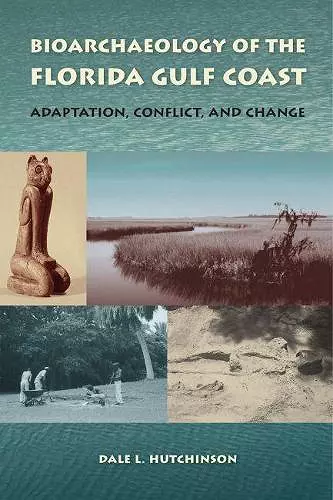Bioarchaeology of the Florida Gulf Coast
Adaptation, Conflict, and Change
Format:Paperback
Publisher:University Press of Florida
Published:30th Jan '20
Should be back in stock very soon

In Bioarchaeology of the Florida Gulf Coast, Dale Hutchinson explores the role of human adaptation along the Gulf Coast of Florida and the influence of coastal foraging on several indigenous Florida populations. The Sarasota landmark known as Historic Spanish Point has captured the attention of historians and archaeologists for over 150 years. This picturesque location includes remnants of a prehistoric Indian village and a massive ancient burial mound-- known to archaeologists as the Palmer Site--that is one of the largest mortuary sites uncovered in the southeastern United States.Interpreting the Palmer population (numbering over 400 burials circa 800 A.D.) by analyzing such topics as health and diet, trauma, and demography, Hutchinson provides a unique view of a post-Archaic group of Indians who lived by hunting, collecting, and fishing rather than by agriculture. This book provides new data that support a general absence of agriculture among Florida Gulf Coast populations within the context of great similarities but also substantial differences in nutrition and health. Along the central and southern Florida Gulf Coast, multiple lines of evidence such as site architecture, settlement density and size, changes in ceramic technology, and the diversity of shell and stone tools suggest that this period was one of emerging social and political complexity accompanied by population growth.The comparisons between the Florida Gulf Coast and other coastal regions illuminate our understanding of coastal adaptation, while comparisons with interior populations further stimulate thoughts regarding the process of culture change during the agricultural era. A volume in the Florida Museum of Natural History: Ripley P. Bullen Series
This volume is state-of-the-art, a wonderful read, and a sterling example of how to do bioarchaeology."—Southeastern Archaeology "An example of the value of considering both historical and bioarchaeological data jointly to provide a fuller picture of the experiences of populations whose voices may be largely absent from the historical record."—American Journal of Physical Anthropology "A smorgasbord of history, anthropology, economics, ecology, geography, and art history."—Choice "Provides a wealth of information. . . . Students of bioarchaeology will greatly benefit from it as it covers nearly every facet of the discipline imaginable. Professionals would do well to include it in their private libraries. . . . A good source and overview of the research potential offered by the area."—H-Net"An important contribution to archaeology. . . . Belongs on the shelves of historians and archaeologists interested in the prehistory of the Southeast."—Gulf South Historical Review "This book is useful for better understanding the lifeways and subsistence of many native Floridians prior to Spanish influence."—SMRC Revista
ISBN: 9780813064420
Dimensions: unknown
Weight: 398g
264 pages